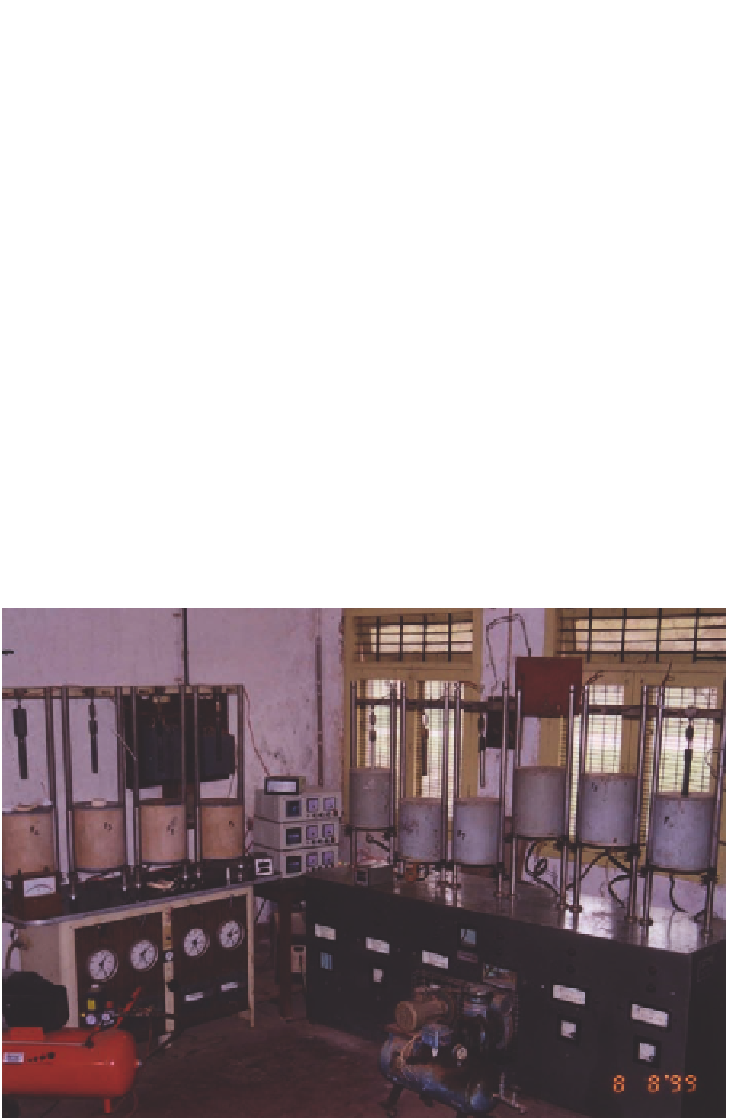Geoscience Reference
In-Depth Information
other important metals, which provided better strength to the alloys. Many countries
attempted to grow large single crystals of quartz using old cannon barrels with closed
ends during early 1940s. In this regard, the contributions of Lobachev and Shtenberg
are important. By the mid-1940s, many laboratories, particularly from the United
States of America, Germany, Russia, and the United Kingdom, were actively engaged
in the growth of large quartz crystals. At this time, Tuttle
[52]
designed a cone-in-cone
seal for a small vessel with no threads to seize. However, the Tuttle apparatus could
not achieve high-pressure and high-temperature conditions, and it did not become very
popular.
Later, Rustom Roy
[53]
modified another vessel that had been designed by
Tuttle but never exploited. It proved to be much simpler and highly versatile. This
modification by Roy is popularly known as the “test-tube bomb,” which is made up
of Hastelloy; Rene 41; Stellite 25 or Udimet, with 1
11
=
2in
:
o.d.
8 in. long,
3
having a 3
2
in. of the bottom. It was
threaded at one end and closed at the other. A more detailed description of the
design and construction of this autoclave is given separately in Chapter 3. The
greatest advantage of this test-tube bomb was not only the ease of operation but
also a large number of such vessels could be served by one pressure source. This
integrated system of several vessels, each with its own gauge with one pressure
generator, became standard hydrothermal laboratory apparatus.
Figure 2.8
shows a
=
16
1
=
4in
:
diameter hole drilled down to
1
Figure 2.8 Picture of an assembly of 10 autoclaves in the laboratory of K. Byrappa.

